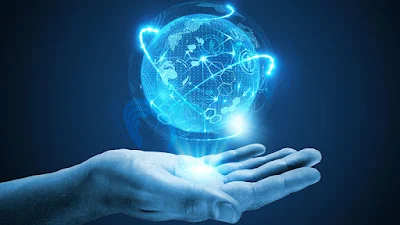How 3D Holograms Work
What is Hologram:
Holography is a technique that enables a wave front to be recorded and later re-constructed. Holography is best known as a method of generating three-dimensional images, but it also has a wide range of other applications.
History:
Hungarian-British engineer Dennis Gabor was awarded the Nobel Prize for Physics in 1971 for the invention of the holographic method. He realized that optical imaging only records the amplitude of waves, not the phase, and that if you recorded both, a three-dimensional image could be captured. Despite conceiving his initial ideas in 1947, the laser was not invented until 1960 and it was not until 1964 that the first hologram was made.How it Works:
The principle of making a hologram is similar to recording an orchestra in surround sound – once the sound has been recorded, the orchestra can stop playing and the sound can be re-created again and again without any instruments. Instead of recording audio, a hologram stores the interference pattern generated by light scattered by an object. This allows that light scatter to be reproduced later, giving the illusion the object is still there.
Capturing a hologram requires a laser light source – most often a red helium-neon laser. The light is divided by a beam splitter and each new beam travels a separate path to the holographic recording plate. The first beam – the object beam – travels to the object itself, while the second goes to a recording plate as a reference to obtain the interference pattern. Before they reach their targets, each beam travels through a lens. Unlike the lens of a camera, the lenses of a holographic recorder are not designed to focus light, but instead spread it out. As the object beam strikes the object, light is reflected and refracted, some of it in the direction of the holographic recording plate. As the object beam reaches the plate, it collides with the reference beam, generating an interference pattern.
Interference is recorded using fine grains of photosensitive chemicals, similar to those used in photography. In essence, the exposed holographic plate is more like a CD than a photographic negative. The stored information cannot be deciphered with the naked eye, instead appearing as a series of bumps and wavy lines. In order to actually view a hologram, a light source must be applied to the film.
There are two main types of hologram, with each viewed in a different way. To look at a transmission hologram, a monochromatic light is passed through the film, producing a floating three-dimensional image of a single colour (most often green). Alternatively, reflection holograms, like those found on bank notes, bounce back light and can be multicoloured.
Challenges in Holograms:
The process of creating a hologram is incredibly light-sensitive, much like traditional photography, so holographic recording is done in a darkroom. Due to the red colour of most holography lasers, traditional red darkroom lights damage the holographic plates, so green or blue-green lights are used instead.
Holography is also much more sensitive to environmental conditions than photography; so much information is packed into such a small space that even minute deviations in the lasers can ruin the hologram. Vibrations in the floor, in the air from body movement or even as people breathe can disrupt the delicate recording process.
One of the major challenges in holography is producing moving holograms - much like camera film, when conventional holographic recording plates are exposed, the image is fixed. Scottish company Holoxia has developed a holographic screen capable of storing prerecorded holographic images. The screen is illuminated from behind, generating a holographic projection above. The screen can switch between the prerecorded images to change the visible projection. By using collections of simpler interference patterns more complex images can be created, a bit like pixels forming an image on an LCD screen.
Advantages of Holograms
Despite the difficulties in creating holograms, the storage capacity they provide is quite simply incredible. Holographic images are truly three-dimensional and can be viewed from all angles. The images are also scalable and holograms made with one wavelength can be viewed with another – the size of the resulting hologram scaling with the wavelength of viewing light. In theory, this means that holograms of extremely small structures, down to the molecular scale, could be created using X-rays and then viewed using visible light, although this is yet to be done.
Future Of Holograms:
The potential for these kinds of technology is vast. Not only can holographic images be used for entertainment, art and education, but the potential applications in medical science, technology design and augmented reality are huge. Doctors in Israel are already using interactive holograms to help perform surgery by re-creating real-time models of organs during operations, while research at the Human Media Lab at Queen’s University in Ontario, Canada, is at the early stages of designing a 3D version of Skype (pictured right). True moving holograms might currently look like LCD screens from the 1980s, but look at where those screens are now.
For Hologramica, it’s all about achieving the impossible: “[We can] make cars float, turn ballerinas into crystal swans, and do things on stage that you can’t do by any other means; people engage emotionally with these images as well as just looking at them. Seeing is believing.”




